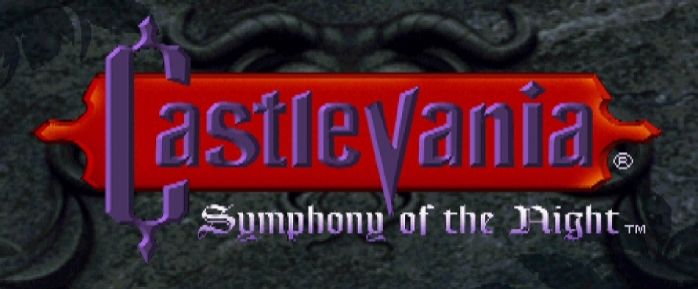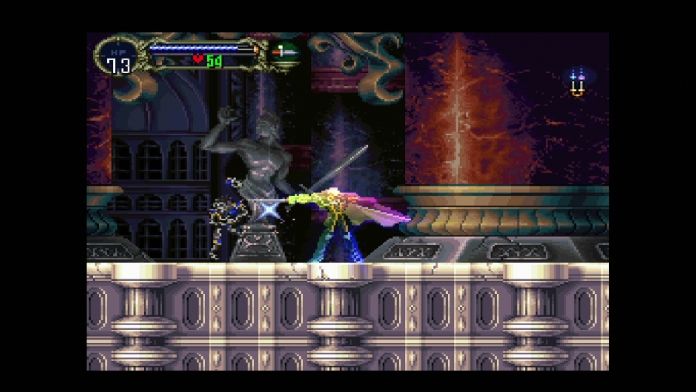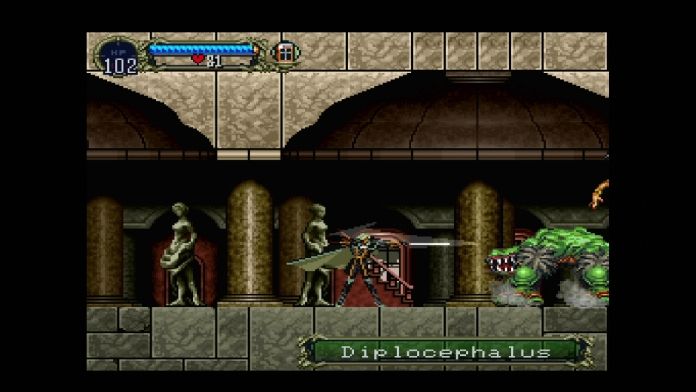Out back of the Hardcore Gamer office you’ll find our Graveyard, where countless long-dead classics lie. We come here to pay our respects, to reminisce, and to wonder aloud what a passing mad doctor might be able do with all these corpses and some high-definition lightning.
Castlevania: Symphony of the Night has become one of the most-beloved games of the 32-bit era and is heralded as a classic 2D game. When it was first released, though, it wasn't expected to be anything but a sleeper hit. The bulk of Konami's attention was spent on the first 3D entry, with SOTN being kind of a side project. It was a direct sequel to Rondo of Blood, which didn't even get a full US release at that time as only the heavily-truncated Dracula X was on the SNES before this came out. Still, because that game was available, it wasn't a complete shock to start it up as Richter Belmont. After Richter defeats Dracula, the story goes ahead four years and we see Alucard head to the castle. He does battle with Death and loses most of his equipment in the struggle. Now he must go through and regain his power. Doing so will be difficult, but the destination is worth the struggle.
Unlike most prior Castlevania games, you don't use a whip here. Instead, Alucard is a fan of bladed weapons. This may have been a shock for some, but Bloodlines players would have been at least used to the idea to some degree with Eric Lucarde using a spear instead of a whip. Beyond a swap in weapon type, Symphony of the Night completely changed the franchise's overall structure. Instead of having set levels, you could explore large chunks of the castle and track your progress with a map like Super Metroid. This gave the adventure a slightly more grand scale, despite being in a theoretically smaller space than past entries because you could see your progress in real-time. Secrets were sprinkled throughout the entire castle, as were upgrades and powerful bosses.
A large boss battle usually means terror in any game - but you know it's time to level up if you're massacred in SOTN. Beyond the open-ended design, the RPG elements that permeate every part of the game are the biggest surprise to newcomers. Quick defeat means grinding is in order - and as long as you've saved close to the boss, you shouldn't be in too much trouble. The key is to make sure to not only upgrade HP, but also weapons and defense. Exploration can sometimes yield items and rewards earlier than expected -- and make exploring the world seem like more of a priority once you find something that can single-handedly change your fate.
Alucard's powers and skills change over time. It starts with simple agility tweaks like double jumps before things like new forms enter the fray. You have the ability to turn into a wolf, bat and a mist form that enable you to go to more locations, evade enemies and just play the game in a completely different way. 99% of your time will still be spent destroying enemies in human form -- but you'll have fun exploring in the other forms too. Unlike the prior Castlevania games, this one really does control perfectly. Past entries had very deliberate controls that worked well, but were also unforgiving at times when combined with their reasonably-high difficulty. Here, you can just move Alucard wherever you want at a fairly smooth clip and not have to worry about the game's control ever hampering you. Everything is responsive and the button configuration is logical and easy to remember in the heat of battle.
Visually, Symphony of the Night has held up remarkably well. The visuals have the beauty of 16-bit pixel art with a level of depth and complexity in the backgrounds that couldn't have been done on any 16-bit console. The usage of color also goes far beyond what was usually seen then, with a lot of color shading that gave a more realistic look to things - which meant that the real-world elements that were in the game added a sense of credibility to the more horror-rooted things like monsters and the like. The animation is smooth as well, but not so smooth as to slow down the experience. There's a greater sense of enemy size here than prior entries as well, and it makes bosses seem even more terrifying.
You can't call a game Symphony of the Night and not deliver a great soundtrack. In the 18 years since its release, the game's soundtrack has become the stuff of legend. Its mix of gothic songs, a bit of heavy metal, and even jazz has stood the test of time. Songs like "Nocturne" are serene are relaxing, while "Dracula's Castle" gets your blood flowing. SOTN's music is timeless, and has certainly aged better than the English dub. It borders on "so bad, it's good" more than it should and plays things off as melodrama as well. It's the game's biggest blemish, and something that Konami somewhat rectified in the PSP re-release of it on the Dracula X Chronicles.
As the first entry in the series with Koji Ikarashi acting in a directorial role, this new chapter in the franchise could not have started off any better. With the IGAvania gameplay style largely being done away with by Konami outside of Lords of Shadow: Mirror of Fate, it seemed like this sub-genre of gaming might be dying out. Fortunately, IGA turned to crowdfunding and announced Bloodstained -- which reached its funding goal quickly and looks to continue the tradition that this game started. Outside of the PS1 original, which can be pricey, you can get the game for around $10 as a PS1 Classic on the PlayStation Store or buy the Dracula X Chronicles on PSN for $15. The latter gets you more for your money, but with a slightly altered version of SOTN. No matter how you play it, Symphony of the Night is something that all action-platforming fans should play in their lifetime.



